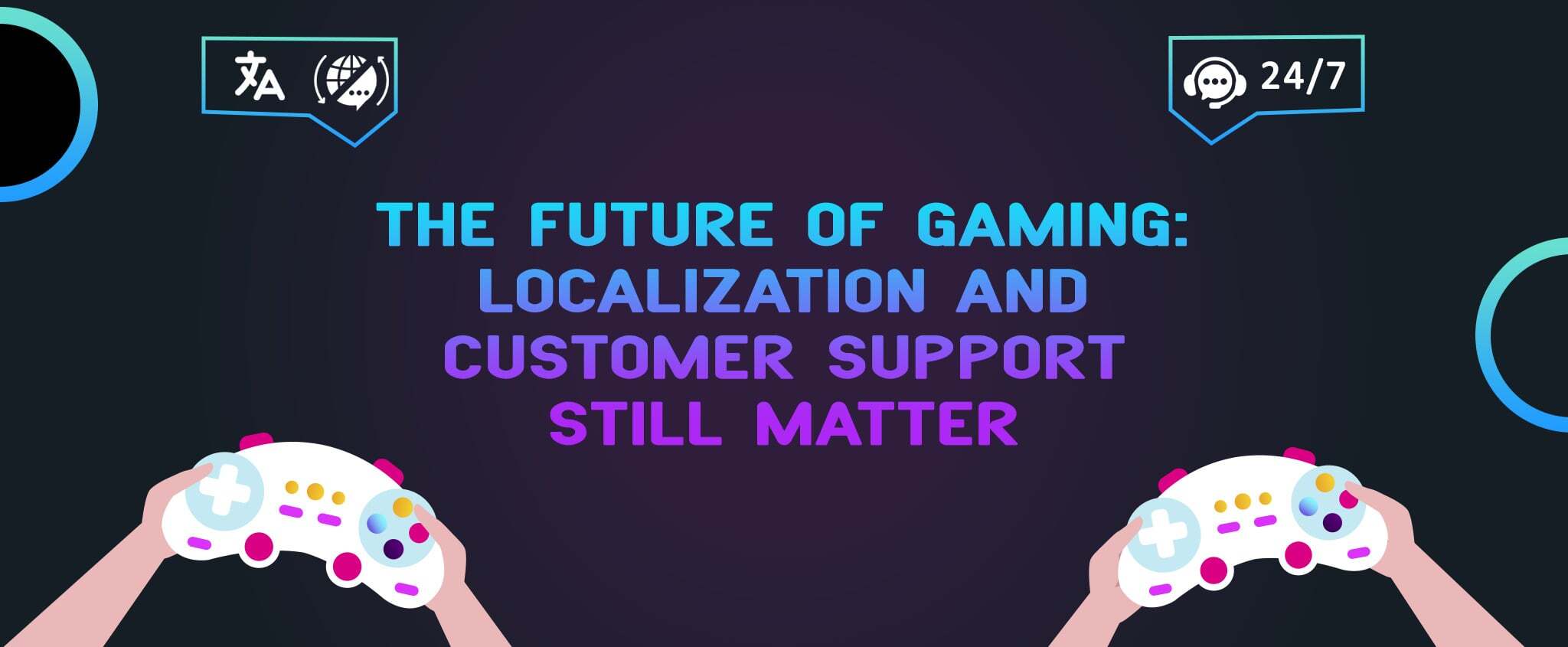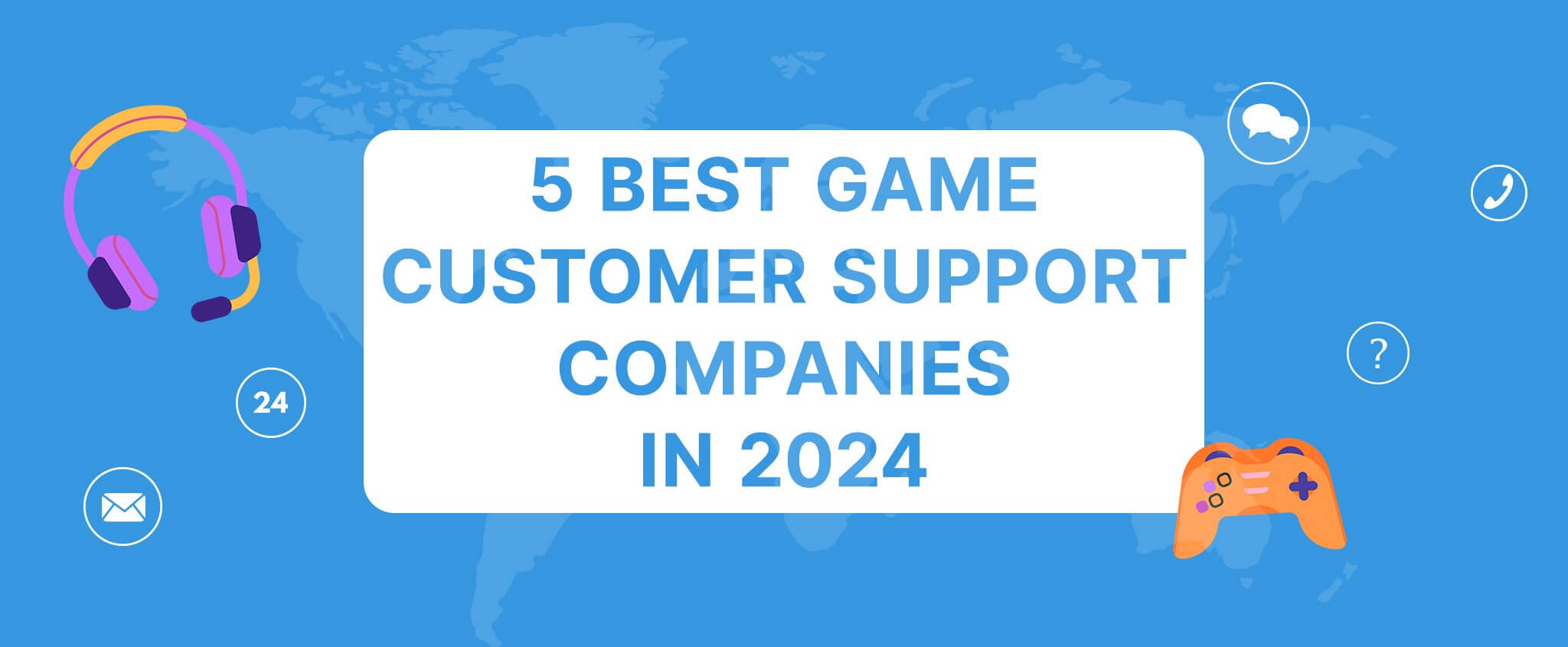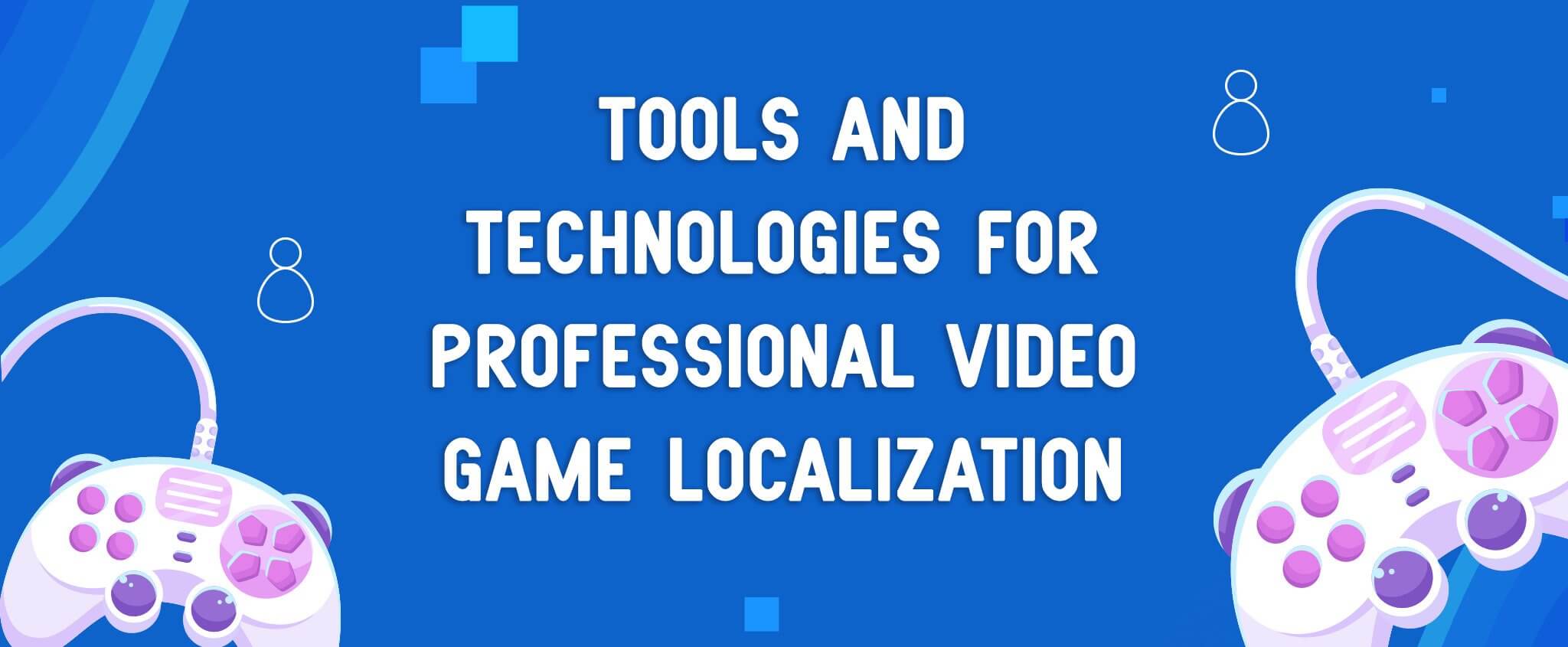The Future of Gaming: Localization and Customer Support Still Matter
Many iconic games have already broken through cultural barriers, reaching countless gamers across the world for years. We have the classics like the Legend of Zelda, Super Mario Bros, Grand Theft Auto, and more! And when we look at the future of gaming, we will still find these titles standing strong. Why? Because of customer support in gaming and localization of video games.
Localization and customer support are vital to a game’s success, especially today. They may seem like two simple factors, but they significantly impact a game’s performance. CCCI explores why these two elements are important, how game developers use them today, and what to look forward to as developers and players alike.
Key Takeaways:
- The future of gaming involves emerging trends, such as AR and VR, cross-platform gaming, and metaverse gaming.
- Gaming customer support allows game developers to understand their players, provide real-time and multichannel support, and create feedback-based products.
- What is localization in gaming? It’s the process of adapting a game to be enjoyed across cultures and countries. Unlike translation in gaming, localization involves ensuring the game uses the appropriate language, visuals, and sound for each region.
- When developers hire game localization specialist, they can tap into new markets and increase revenue, connect deeply with players worldwide, and establish competitiveness in the industry.
Table of Content:
- An Overview of the Gaming Industry
- The Future of Gaming: Industry Trends
- The Role of Customer Support in Gaming
- Why You Should Localize Your Game
- CCCI – Professional Game Localization and Customer Support Services
An Overview of the Gaming Industry
With the advent of advanced hardware capabilities, gaming has become a multibillion-dollar industry with no signs of slowing down. As technology continues to evolve and gamers gain access to a wider variety of interactive experiences, the gaming industry will continuously grow in size and scope. It’s especially true regarding mobile gaming, the biggest video game platform.
In 2020, the mobile gaming market generated over 77 billion USD, and the worldwide PC gaming market had a revenue of about 37 billion USD. Experts said that the global gaming market will reach 268.8 billion USD annually in 2025, with North America and Asia as the two top-grossing markets. In-game purchases can also account for over 74 million USD!
Developers release new titles yearly, competing for billions of gamers’ attention. We also find new trends in the future of gaming every now and then. Developers must keep up with the ever-changing landscape and retain successful titles’ most effective elements.
The Future of Gaming: Industry Trends
Speaking of an ever-changing landscape, let’s talk about what’s next for the gaming industry. We predict it will evolve even more, and developers and players can look forward to an abundance of new features. The industry can expect innovations in video game types, graphics design, and development processes. Here are three of the industry trends that will likely take over the gaming world:
Augmented Reality (AR) and Virtual Reality (VR)
AR and VR have been around for a while now. However, we are yet to see their full potential on the gaming scene. With more powerful hardware and software, developers can use these emerging technologies to create stunning immersive gaming experiences!
Cross-Platform Video Games
Gamers love the flexibility in gaming, and cross-platform video games provide that. Console players can now team up with PC gaming peers to battle, complete quests, or just chat.
Note: Cloud gaming is one platform that has undeniably revolutionized the gaming industry. It allows gamers to enjoy their favorite titles irrespective of platform.
Metaverse Gaming
Metaverse gaming is a relatively new concept. It’s a hyper-immersive gaming experience where players can interact with an online virtual world. Unlike traditional video games, this concept uses blockchain technology. It enables gamers to explore an entirely new universe full of possibilities!
The Role of Customer Support in Gaming
“What does gaming customer support have to do with all these?” you might ask. Well, customer support may not be a direct part of the game, but it is necessary. Developers must offer gaming excellent customer support, especially to retain players in a competitive industry. Here are the roles that customer support in gaming plays:
Real-time and Multichannel Support
Customer support ensures gamers can get quick answers to their queries and access help when needed. No matter how sure you are that your game won’t crash, players will still need assistance at some point. Players often need assistance regarding game features, technical issues, and payment problems.
As such, customer support available in different forms, such as emails, social media, and chatbots, provide gamers with a hassle-free experience. Players will likely feel frustrated and unimportant without customer support, which might hurt your game’s reputation.
Understanding the Players
As said by 24-7 Intouch in “Customer Service in the Video Gaming Industry”:
“Customer Satisfaction is at the forefront of all customer service interactions, and especially holds true in the gaming industry. Agents prioritize the player experience, ensuring that the customer support they provide will always result in an improved experience for the player.”
No matter the trends or innovations, players will always want to feel connected to the game they play. Customer support lets you understand what your players want and need, providing the best gaming experience possible. You establish a strong relationship with players by bridging them with your game through customer support!
Creating Feedback-Based Products
Customer support agents interact with many gamers, and they often hear the same issues players face. Thus, customer support is an excellent source of feedback. This feedback allows developers to identify problems and develop products to make the player’s experience more enjoyable.
For example, developers can create game patches to fix bugs or upgrade the gaming platform. If players express dissatisfaction with in-game items, developers can introduce new ones to spice up the game. Ultimately, customer support helps create and promote better gaming experiences.
Why You Should Localize Your Game
Now, you might also wonder, what does localization have to do with success in gaming? And above all, what is localization in gaming? Localization is the process of adapting a game, such as its content, visuals, and audio, to suit different languages and cultures. It’s another crucial part of the whole game development process, and here’s why:
Increases Downloads and Sales
Localization makes games more accessible to players in different regions, which increases their fan base. The Legend of Zelda gaming series is a good example. Its localization to English, Spanish, French, German, and other languages allowed it to reach a wider audience and receive more downloads! Localization enables developers to tap into new markets, ultimately increasing downloads and sales.
Ensures Gamers Know They’re Important
Localizing games also shows gamers that developers care about them and want to provide an enjoyable gaming experience. When you hire game localization specialist for your game, you allow gamers to enjoy your product in their own language, as though you really created it for them. Moreover, multilingual customer support makes gamers feel heard and respected, regardless of language and preferences.
Pro Tip: Trust only the professionals in localization and multilingual customer support. How you connect with your players matters, and localization mistakes can be costly. Moreover, multilingual customer support can be complex and time-consuming to manage on your own.
Reduces the Risk of Misunderstanding the Context of Your Game
Translation and localization are two very different processes. With translation, you convert the language of your game into another language. But with localization, you ensure that all cultural aspects of your game are considered and conveyed correctly.
Localization lets players understand the context, culture, and overall message you’re trying to convey in your game. For example, you can localize the clothing in your game to reflect the culture of its players or adjust the dialogue to make it more natural.
Establishes Competitiveness
Lastly, localization helps you stand out from the competition. Many games get lost in the crowd, and this hinders their success. With countless new games released every year, localization increases your chances of success by allowing you to target different regions and capture the attention of new players. Localizing your game gives it the edge it needs to become competitive and stand out!
CCCI – Professional Game Localization and Customer Support Services
If the Legend of Zelda wasn’t localized into different languages, would it have been as successful as today? If Super Mario Bros didn’t have customer support, how many gamers would’ve stopped playing the game years ago?
Yes, the gaming industry sees new trends annually. However, all the same, localization and customer support still matter in the future of gaming. You may have the latest metaverse game with the most advanced graphics, but if your target players can’t understand or relate to it, they won’t play. If you don’t provide them support when they need it, they won’t stay. Without the two, players may never learn the greatness of your game.
At CCCI, we understand just how vital localization and customer support are for the success of gaming. We offer specialized game localization and customer support services to ensure your game reaches its full potential. We help you navigate different cultures, languages, and customs so you reach a wider audience. Get in touch with us today!






